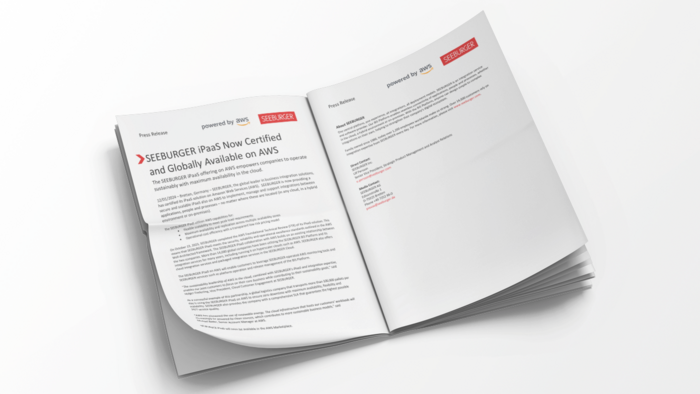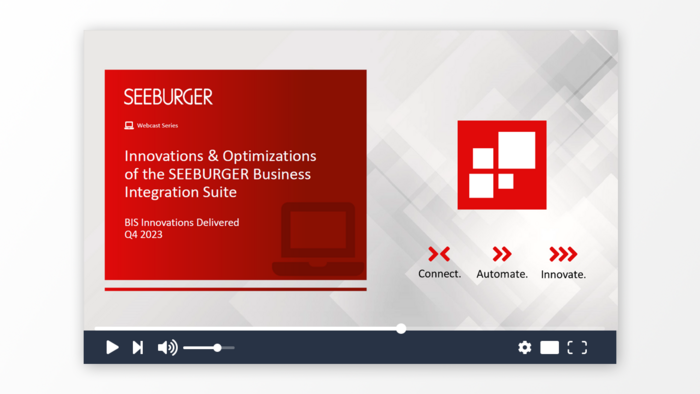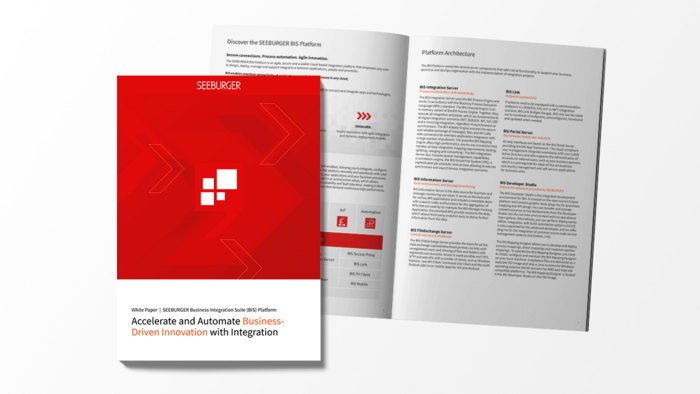The SEEBURGER
Business Integration Suite (BIS) Platform
One agile, secure and scalable platform for integrations between applications, people and processes. Flexible deployment choices. Any cloud, hybrid and on-premises.
Why SEEBURGER?
One central platform, one experience, all integrations, all deployment models. Our BIS Platform enables seamless connectivity of applications, people and processes, whether in the cloud, a hybrid environment or on-premises. With the BIS Platform, anyone can design simple to complex integrations on their own, helping to strengthen their company's digital ecosystem.
SEEBURGER is an integration service and software provider. Family-owned since 1986, today over 1,200 employees worldwide make us strong. Over 14,000 customers rely on integration expertise from SEEBURGER every day.
Enable and manage fast, reliable and secure file transfers
Transform and enhance your approach to B2B/EDI
Integrate apps and data
API integration and management
Innovate your IIoT integration
Hyperautomate and digitalize processes
Everything on a single platform
Empower any user to deploy and manage the easiest to the most complex integrations with the SEEBURGER BIS Platform. Connect apps, integrate technologies, automate processes and inspire innovation with agile integration and dynamic deployment models.
The BIS Platform
Connect apps, integrate technologies, automate processes and inspire innovation with agile integration and dynamic deployment models.
Connect
Integrate apps and technologies for secure data exchange
Seamlessly connect and integrate applications, technologies, services and people across your entire ecosystem. Unite any capability, including API, EAI, MFT, B2B/EDI and IIoT — all with one cloud-based platform.
Evolve your digital ecosystem: Connect your ground-to-cloud and cloud-to-cloud with ready-to-use packaged integration processes (PIPs).
Design your ecosystem according to your needs. Be ready for tomorrow's challenges today.
Automate
Hyperautomate and digitalize
processes.
Onboard your business partners in days, instead of weeks or months, with automated onboarding and data collection processes.
Reduce IT effort and costs, increase security and free your teams from repetitive manual tasks with intelligent automation.
Rapidly deploy and manage integrations your way. We meet you where you need us.
Innovate
Inspire innovation with agile integration and dynamic deployment models.
Drive business innovation that creates sustainable customer relationships. Our agile development can respond to your needs and support you optimally.
Use ready-made PIPs and connectors to make your processes more effective.
Choose the deployment and operational service models you need for agile architecture design, optimal security and cost-efficiency.
Explore more from the SEEBURGER universe
Discover SEEBURGER's ready-to-use solutions for the fast and easy connectivity of any endpoint: certified SAP Solution Extensions, global certified E-Invoicing and Peppol, Community Management and packaged integration processes.
Featured Connectors
Explore the current top-rated SEEBURGER Connectors today!
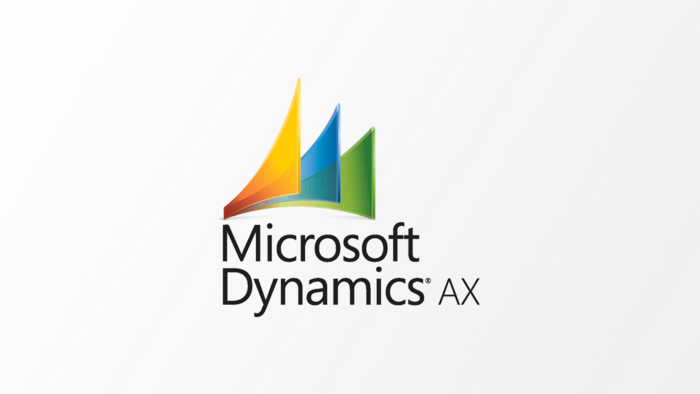
Integration and connectivity to Microsoft Dynamics 365
Today your business extends further than ever before, to the cloud and beyond, and ERP applications are now the core of your business. SEEBURGER supports your Microsoft Dynamics 365 integration by extending your ERP applications, including business processes and other assets across your…
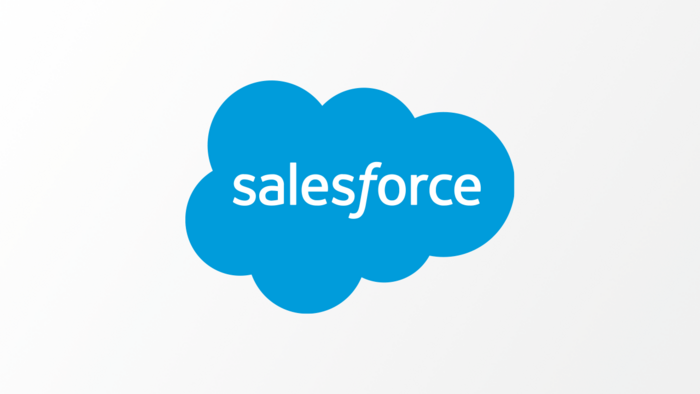
Salesforce CRM Integration
Connectivity to Salesforce enables you to easily synchronize your data from ERP to CRM and vice versa – without any development. It provides you with instant connectivity to the most common functionality of Salesforce APIs so you can synchronize customer, product or order data between your ERP and Salesforce…
Case Studies
Find out how our customers from the automotive, consumer packaged goods (CPG), utilities, financial services, healthcare and pharma, retail, logistics, machinery and plant engineering, and oil, gas and chemical industries leverage the BIS Platform's integration capabilities — deployed in any cloud, in a hybrid environment or on-premises.
The BIS Platform in your industry
